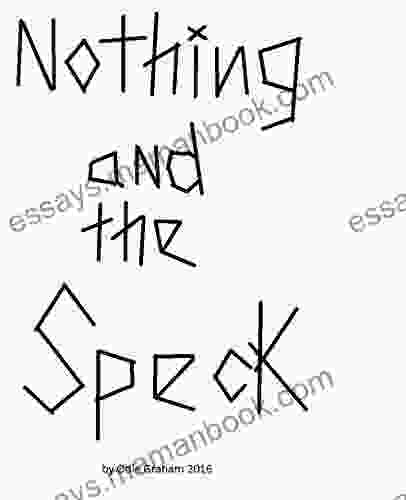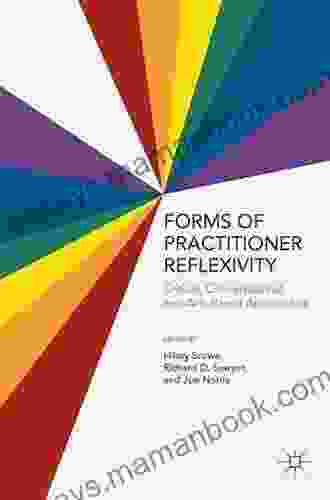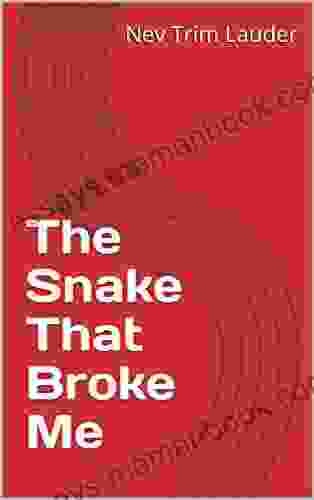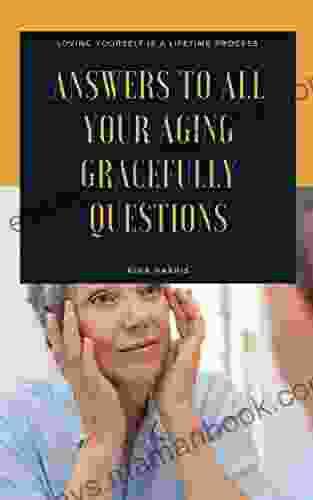Forms of Practitioner Reflexivity: A Comprehensive Guide for Reflective Practitioners

Practitioner reflexivity is a crucial aspect of professional practice, enabling practitioners to critically examine their own thoughts, actions, and experiences to enhance their understanding and effectiveness. Reflexivity involves a conscious and systematic process of self-observation and evaluation, allowing practitioners to gain insights into their strengths, weaknesses, and areas for improvement. Through reflexivity, practitioners can improve their decision-making, enhance their communication skills, and foster a more ethical and responsible approach to their work.
5 out of 5
| Language | : | English |
| File size | : | 749 KB |
| Text-to-Speech | : | Enabled |
| Enhanced typesetting | : | Enabled |
| Word Wise | : | Enabled |
| Print length | : | 260 pages |
| Screen Reader | : | Supported |
| Paperback | : | 77 pages |
| Item Weight | : | 7.5 ounces |
| Dimensions | : | 8.5 x 0.19 x 8.5 inches |
Types of Practitioner Reflexivity
There are various forms of practitioner reflexivity, each offering a unique approach to self-examination. Here are some common types:
- Introspective Reflexivity: Involves reflecting on personal thoughts, feelings, and motivations, examining how these factors influence professional practice.
- Interactive Reflexivity: Occurs through interactions with clients, colleagues, and supervisors, providing valuable feedback and perspectives for self-evaluation.
- Critical Reflexivity: Involves examining power dynamics, biases, and assumptions within the professional context, challenging prevailing norms and structures.
- Autoethnographic Reflexivity: Combines personal narratives with research and theory to explore the intersection of the practitioner's life experiences and professional practice.
- Collaborative Reflexivity: Involves engaging in reflective discussions with colleagues, peers, or supervisors, fostering shared insights and support.
Benefits of Practitioner Reflexivity
Engaging in practitioner reflexivity offers numerous benefits for practitioners, including:
- Improved Self-Awareness: Reflexivity promotes a deeper understanding of one's thoughts, feelings, and motivations, leading to increased self-awareness and self-knowledge.
- Enhanced Critical Thinking: Through reflection, practitioners can critically examine their assumptions, biases, and beliefs, fostering a more nuanced and informed approach to decision-making.
- Increased Ethical Sensitivity: Reflexivity facilitates ethical decision-making by raising awareness of potential ethical dilemmas and encouraging thoughtful consideration of ethical principles.
- Improved Communication Skills: By reflecting on their communication patterns and interactions, practitioners can enhance their ability to communicate effectively and build stronger relationships.
- Greater Professional Satisfaction: Reflexivity fosters a sense of personal and professional growth, contributing to increased job satisfaction and motivation.
Implementing Practitioner Reflexivity
Incorporating practitioner reflexivity into professional practice requires a conscious effort and commitment. Here are some tips for implementing reflexivity:
- Set Aside Time for Reflection: Schedule regular time for self-reflection, away from distractions, to allow for deep contemplation.
- Use Reflective Tools: Utilize reflective journals, written exercises, or online tools to facilitate self-examination and document insights.
- Engage in Collaborative Reflection: Seek feedback from colleagues, supervisors, or mentors to gain diverse perspectives and foster shared understanding.
- Practice Mindful Observation: Pay attention to your thoughts, feelings, and actions throughout the day, noting patterns and areas for improvement.
- Continuous Learning: Engage in ongoing professional development to expand your knowledge, skills, and perspectives, enhancing your ability to reflect critically on your practice.
Challenges to Practitioner Reflexivity
While practitioner reflexivity is highly beneficial, it can also present certain challenges:
- Time Constraints: Finding dedicated time for reflection can be difficult amidst busy work schedules.
- Emotional Vulnerability: Self-examination can evoke uncomfortable emotions, making it challenging to engage in honest and thorough reflection.
- Cultural Influences: Cultural norms and values can influence the extent to which practitioners engage in self-reflection.
- Organizational Resistance: Some organizations may not fully embrace the concept of reflexivity and provide limited support for practitioners to engage in reflective practice.
- Lack of Training: Practitioners may not receive adequate training or guidance on how to effectively engage in reflexivity.
Overcoming Challenges to Practitioner Reflexivity
Addressing the challenges associated with practitioner reflexivity is crucial for successful implementation:
- Prioritize Time: Schedule regular time for reflection and treat it as a non-negotiable appointment.
- Practice Self-Care: Engage in activities that promote emotional well-being and self-compassion to facilitate open and honest reflection.
- Seek Support: Reach out to colleagues, supervisors, or mentors for support and guidance in navigating the challenges of reflexivity.
- Advocate for Reflexivity: Engage in discussions with supervisors and organizational leaders to promote the importance of reflexivity and foster a supportive environment.
- Engage in Training: Attend workshops or training programs to develop skills and strategies for effective reflexivity.
Practitioner reflexivity is an invaluable tool for professional growth, self-improvement, and ethical practice. By engaging in various forms of reflexivity, practitioners can gain deeper insights into their own thoughts, actions, and experiences, leading to enhanced decision-making, communication skills, and a more ethical and responsible approach to their work. Overcoming challenges and embracing the benefits of practitioner reflexivity can empower professionals to become more effective, reflective, and impactful in their field.
5 out of 5
| Language | : | English |
| File size | : | 749 KB |
| Text-to-Speech | : | Enabled |
| Enhanced typesetting | : | Enabled |
| Word Wise | : | Enabled |
| Print length | : | 260 pages |
| Screen Reader | : | Supported |
| Paperback | : | 77 pages |
| Item Weight | : | 7.5 ounces |
| Dimensions | : | 8.5 x 0.19 x 8.5 inches |
Do you want to contribute by writing guest posts on this blog?
Please contact us and send us a resume of previous articles that you have written.
 Top Book
Top Book Novel
Novel Fiction
Fiction Nonfiction
Nonfiction Literature
Literature Paperback
Paperback Hardcover
Hardcover E-book
E-book Audiobook
Audiobook Bestseller
Bestseller Classic
Classic Mystery
Mystery Thriller
Thriller Romance
Romance Fantasy
Fantasy Science Fiction
Science Fiction Biography
Biography Memoir
Memoir Autobiography
Autobiography Poetry
Poetry Drama
Drama Historical Fiction
Historical Fiction Self-help
Self-help Young Adult
Young Adult Childrens Books
Childrens Books Graphic Novel
Graphic Novel Anthology
Anthology Series
Series Encyclopedia
Encyclopedia Reference
Reference Guidebook
Guidebook Textbook
Textbook Workbook
Workbook Journal
Journal Diary
Diary Manuscript
Manuscript Folio
Folio Pulp Fiction
Pulp Fiction Short Stories
Short Stories Fairy Tales
Fairy Tales Fables
Fables Mythology
Mythology Philosophy
Philosophy Religion
Religion Spirituality
Spirituality Essays
Essays Critique
Critique Commentary
Commentary Glossary
Glossary Bibliography
Bibliography Index
Index Table of Contents
Table of Contents Preface
Preface Introduction
Introduction Foreword
Foreword Afterword
Afterword Appendices
Appendices Annotations
Annotations Footnotes
Footnotes Epilogue
Epilogue Prologue
Prologue Patrick Phillips
Patrick Phillips Tasmin Hansmann
Tasmin Hansmann Kathy Stanton
Kathy Stanton Bryan D Eisenbise
Bryan D Eisenbise Morgan Moeller
Morgan Moeller Jack S Katz
Jack S Katz Yana Toboso
Yana Toboso Bonnie Belden Doney
Bonnie Belden Doney Martin Mcdonagh
Martin Mcdonagh Everina Maxwell
Everina Maxwell Chelsea Patterson Sobolik
Chelsea Patterson Sobolik J Randy Taraborrelli
J Randy Taraborrelli Shamini Mary
Shamini Mary Donald S Kachur
Donald S Kachur Ashley Capes
Ashley Capes Thomas M Nichols
Thomas M Nichols Laurie Notaro
Laurie Notaro Mrs Autumn Mckay
Mrs Autumn Mckay Adeval De Andrade
Adeval De Andrade Tennessee Williams
Tennessee Williams
Light bulbAdvertise smarter! Our strategic ad space ensures maximum exposure. Reserve your spot today!
 Cameron ReedFollow ·7.3k
Cameron ReedFollow ·7.3k Ryūnosuke AkutagawaFollow ·3.7k
Ryūnosuke AkutagawaFollow ·3.7k Eliot FosterFollow ·11.1k
Eliot FosterFollow ·11.1k Isaias BlairFollow ·19.6k
Isaias BlairFollow ·19.6k Sidney CoxFollow ·3.5k
Sidney CoxFollow ·3.5k Corey GreenFollow ·14.8k
Corey GreenFollow ·14.8k Ernest PowellFollow ·6.7k
Ernest PowellFollow ·6.7k Clayton HayesFollow ·19.4k
Clayton HayesFollow ·19.4k

 Dean Butler
Dean ButlerBlack Widow 2024: A Comprehensive Guide to Kelly...
In 2024, Marvel...

 Gage Hayes
Gage HayesNothing and the Speck: An In-Depth Analysis of Yana...
Yana Toboso's works, particularly the manga...

 Stan Ward
Stan WardThe Best American Poetry 1997: James Tate
The Best American Poetry...

 Corey Green
Corey GreenThe Chance of Home: Exploring the Poetic Landscape of...
Immerse yourself in the evocative world of...
5 out of 5
| Language | : | English |
| File size | : | 749 KB |
| Text-to-Speech | : | Enabled |
| Enhanced typesetting | : | Enabled |
| Word Wise | : | Enabled |
| Print length | : | 260 pages |
| Screen Reader | : | Supported |
| Paperback | : | 77 pages |
| Item Weight | : | 7.5 ounces |
| Dimensions | : | 8.5 x 0.19 x 8.5 inches |
















